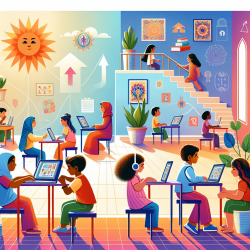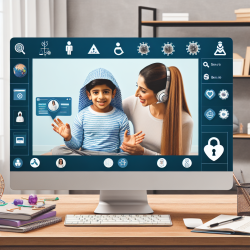The landscape of special education is evolving, with technology playing a pivotal role in shaping more inclusive, accessible, and effective learning environments. As we navigate this transformative era, telepractice emerges as a beacon of hope, offering innovative solutions to longstanding challenges in special education. For funding agencies dedicated to enhancing educational outcomes, understanding the potential of telepractice is essential. It's not just about embracing new technology; it's about fostering a culture of self-actualization where every student has the opportunity to reach their fullest potential.
Telepractice, a subset of telehealth, leverages technology to deliver educational and therapeutic services remotely. This approach has shown remarkable promise in special education, where personalized, consistent support is crucial. By understanding the intricacies of telepractice, funding agencies can play a significant role in promoting a future where technology and education converge to empower individuals with special needs.
The Case for Telepractice in Special Education
At its core, telepractice addresses two critical challenges in special education: accessibility and individualization. For students in remote or underserved areas, accessing specialized services can be a daunting task. Telepractice bridges this gap, ensuring that geography no longer dictates the quality of education a child receives. Furthermore, telepractice facilitates a tailored approach to education, allowing therapists and educators to adapt their methods to meet the unique needs of each student.
- Enhanced Accessibility: Telepractice makes specialized educational and therapeutic services available to students regardless of their geographical location. This is particularly beneficial for rural or isolated communities where such services are often scarce.
- Personalized Learning: Technology enables educators to design personalized learning experiences that cater to the individual needs of students with special needs, fostering an environment where every child can thrive.
- Consistency and Flexibility: Remote services offer the flexibility to maintain consistent support, even in the face of disruptions such as school closures or personal challenges that might prevent in-person attendance.
Self-Actualization Through Telepractice
Self-actualization, the realization or fulfillment of one's talents and potentialities, is a critical outcome of effective special education. Telepractice empowers students by providing them with the tools and support they need to overcome barriers and achieve their personal best. It promotes autonomy, confidence, and the development of essential life skills, paving the way for students to become self-sufficient and successful individuals.
For educators and therapists, telepractice offers opportunities for professional growth and development. It encourages the adoption of innovative teaching strategies and continuous learning, ensuring that they can meet the evolving needs of their students. Funding agencies, by supporting telepractice initiatives, contribute to a culture of continuous improvement and self-actualization for all stakeholders in the special education ecosystem.
Implementing Telepractice: Considerations for Funding Agencies
While the benefits of telepractice are clear, its implementation requires careful consideration and strategic planning. Funding agencies play a crucial role in this process, providing the resources and support needed to overcome potential challenges. Key considerations include:
- Infrastructure: Ensuring that schools and service providers have the necessary technological infrastructure to deliver high-quality telepractice services.
- Training: Investing in professional development for educators and therapists to equip them with the skills needed to effectively utilize telepractice methodologies.
- Regulatory Compliance: Navigating the legal and regulatory landscape of telehealth to ensure that telepractice services are delivered in compliance with all applicable laws and standards.
- Equity and Inclusion: Promoting equitable access to telepractice services for all students, including those from disadvantaged backgrounds or with limited access to technology.
By addressing these considerations, funding agencies can help pave the way for a seamless integration of telepractice into special education, ensuring that all students have the opportunity to reach their full potential.
Taking the Next Step
The journey toward embracing telepractice in special education is a collaborative effort, requiring the commitment and cooperation of all stakeholders. Funding agencies, with their unique position and resources, have the power to catalyze change, promoting an educational landscape where technology serves as a bridge to self-actualization for students with special needs.
To take the next step, funding agencies should:
- Engage with educators, therapists, and technology providers to understand the specific needs and challenges of implementing telepractice.
- Develop strategic partnerships to support the deployment of telepractice initiatives, ensuring that they are sustainable and scalable.
- Monitor and evaluate the impact of telepractice on educational outcomes, using data-driven insights to guide future investments and improvements.
In conclusion, telepractice represents a significant opportunity for special education, offering a path to self-actualization for students, educators, and funding agencies alike. By embracing this technology, we can create an inclusive, accessible, and effective educational environment that empowers every student to achieve their fullest potential. The time to act is now; let's work together to make telepractice a cornerstone of special education.










